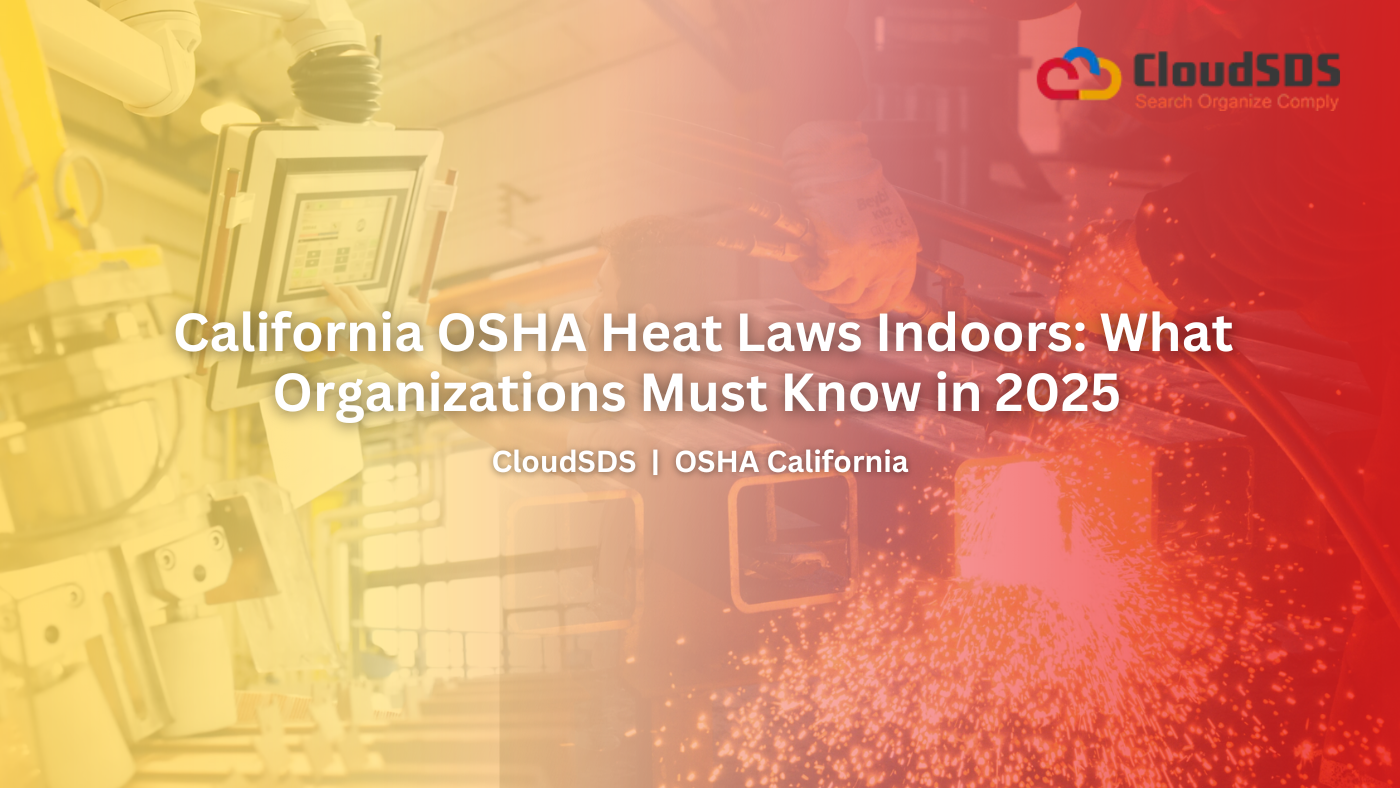Introduction
On July 23, 2024, California enacted the first-ever comprehensive Indoor Illness Prevention Standard (T8CCR 3396) to affect the responsibilities of businesses with indoor employees in the Golden State. If your company has warehouses, restaurants, manufacturing facilities — any environment where indoor temperatures can exceed 82°F (or are already measuring that high) — you're now at the center of Cal/OSHA's attention. Non-compliance could lead to tangible enforcement risks, making it crucial to act swiftly.
As B2B companies and workplace policy makers, you are the ones who will ensure compliance with the new standard. We will break down the new requirements, outline critical exemptions included in the mandate, and provide a clear roadmap for what you need to do this year to remain compliant while ensuring your workforce is protected.
Who Is Covered? Scope and Triggers
A few even list most of the workplaces — indoors, where the thermostat reads above 82°F. This means:
- This subsequently includes warehouses, distribution centers, manufacturing, restaurants, and much more.
Key temperature triggers:
- 82°F: Triggers many, but not all, of the necessities.
- At 87°F: Display light work or rest requires decrease, moderate to heavy work accompanied by considerable radiant heat from machinery or ovens and exposure protective clothing challenges the evaporation of sweat.
Not covered:
- Telework employees doing work at any location other than their address.
- Brief, intermittent exposure to heat <15 min/hour (except when air temperature is ≥95°F or in contact with hot surfaces).
- Prison, Detention Centers, and Some Emergency Operations.
Compliance Checklist: What Every B2B Employer Must Do
HIPP = INDOOR HEAT ILLNESS PREVENTION PLAN
- It is required for every covered employer.
- It could be incorporated into your IIPP or extraneous.
- May or may not tackle all serious accidents and injuries in the workplace.
- Employers must address:
- Operators should set protocols for water and rest areas.
- Emergency response steps.
- Employee and supervisor training.
2. Water and Cool-Down Access
- Supplying cool, potable drinking water, at least one quart per hour per worker, at no cost, within easy reach of all employees.
- Cool-down areas (≤82°F) for rest breaks, free from direct sunlight and high radiant heat.
- Break areas should be of sufficient size to accommodate all employees in a break at a time, and be located near work locations, while being well-ventilated.
3. Monitoring and Risk Assessment
- Supervisors must monitor when thresholds are met.
- Measure indoor temperature or heat index values and log readings.
- Check frequently and maintain records of readings.
4. Engineering and Administrative Controls
- Engineering controls: AC units, fans, ventilation, shading workflows, and barriers to radiant heat.
- Modify the work/rest schedule.
- Mandate more frequent breaks.
- Allow flexibility to start/finish times during heat waves.
- If all of the above fail to keep temperatures below mandated levels, use personal protective equipment (PPE) to lower risk.
5. Acclimatization Procedures
- Watch new or recently moved employees for the first 2 weeks in high heat areas.
6. Training and Communication
- Provide training to all employees and supervisors in:
- How to use preventive equipment like face masks.
- Warning signs of heat illness.
- The company’s heat response plan.
- Location and use of water/cool-down areas.
- Reporting and emergency procedures.
7. Emergency Response Planning
- Write out plans for providing immediate aid to employees suffering from heat-induced illness.
- Ensure that every worker can contact crisis services promptly.
Insight for B2B Policy Makers
Multi-Shift/Contract Operations: This includes all subcontractors, temporary staffing, and service partners. If the work site triggers the law, then employers are liable for their exposure.
Model Policy Integration
California OSHA gives Safety Plans and Model Programs templates. Have heat policy review as part of standard safety audits periodically for continued compliance.
Conclusion
California employers have a greater responsibility for indoor heat safety than ever before. For the B2B policy manager, upgrading containment measures, implementing workplace elements, and ensuring compliance with the law are the top priorities.
Being proactive with this is not just about avoiding fines; it is about helping to support productivity and worker health in the face of rising temperatures on our planet. If you need help writing policy or conducting a risk audit, seek out legal counsel and Cal/OSHA resources for current templates and guidance.

Leave A Comment